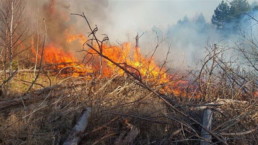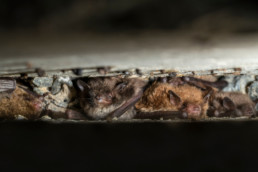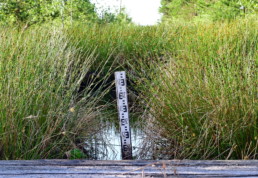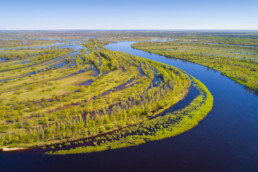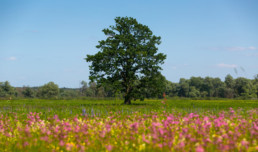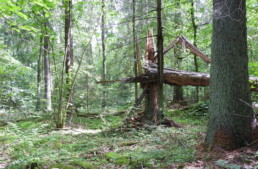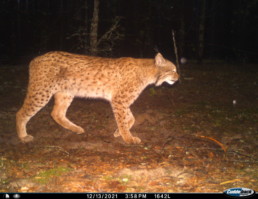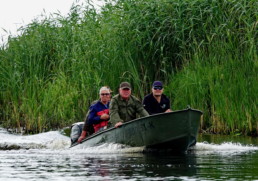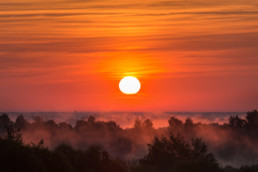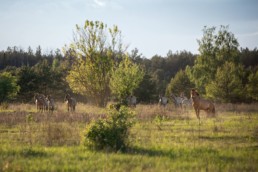Protecting migratory birds and their habitat in Polesia
by Zanne Labuschagne
As the season begins to turn in the vast wetlands, mires and forests of Polesia, the southward movement of several key migratory bird species has begun. Polesia is one of Europe’s largest intact wetland areas and as such is one of its most important sites for migratory birds, and in particular waders and waterfowl. Each year, in the spring, hundreds of thousands of Eurasian widgeons and ruffs as well as over 20,000 black-tailed godwits temporarily congregate in the area.
In order to effectively protect the rich abundance of life found in Polesia we need a better understanding of where biodiversity is concentrated, and the threats facing the area’s wildlife. This growing database of information is guiding our conservation actions and driving informed decisions; helping to identify areas in need of improved protection status or where to expand and better link protected areas. Behind this growing knowledge of the area is a dedicated team of experts, working tirelessly in often challenging conditions to help protect Polesia.
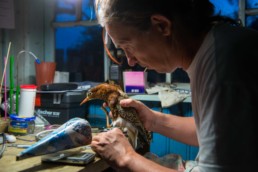
Turov Ringing Station, a hub for the study of migratory birds
Over 20 years ago, at the heart of Polesia, Pavel Pinchuk founded the Turov Ringing Station on the banks of the Pripyat River. An ornithologist with APB-Birldife Belarus, and a passionate naturalist, over the past two decades he has spent most of his days ringing, counting and studying the area’s birds.
Observations from Turov by Pavel and ornithologists from the Institute of Zoology (of the National Academy of Sciences of Belarus) have brought to light shifts in bird abundance and diversity in the area, information that is helping to identify ranges and threats requiring urgent conservation action. The work carried out at Turov is also helping us better understand the resource needs of species that have shown population declines. Each year a group of volunteers head to Turov to assist with ringing activities, a great example of local communities taking ownership for the protection of Polesia.
Space for Great Snipes
It was at Turov that the first tagging of Great Snipes in Belarus took place last year, providing a rare window into the fascinating migration of this threatened species. Beautifully marked with dappled stripes, Great Snipes are stocky waders that spend the warmer months in Polesia where they congregate in leks to breed. Thanks to Pavel’s efforts these important sites are now protected up to 300 meters from their centre to reduce disturbance to the breeding birds, but the latest data suggest that protecting only the breeding sites might not be enough.
Since 2019 over a hundred Great Snipes have been ringed in the area and transmitters were fitted on eleven of these by the Turov Ringing Station team providing important information on their migration patterns. Previous studies have shown that snipes will fly up to 6000 kilometres without stopping, reaching speeds up to 165 kilometres an hour. Soon after Pavel’s work at Turov was launched, a Great Snipe ringed in Polesia was detected in Gabon on Africa’s west coast – 6000 kilometres away from the site where it was originally identified. As Pavel points out, “to survive this remarkable journey requires preparation – places rich in food and with a minimum of disturbance to build up strength for their flight”. Our team is working hard to ensure that such areas exist and are preserved in Polesia.
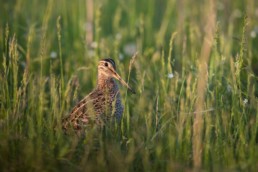
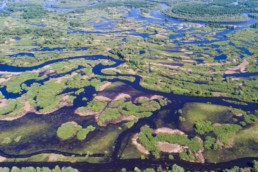
Weaker spring floods, dropping bird numbers
Polesia is not immune to the detrimental changes that are affecting biodiversity across the globe – the past few years saw smaller than usual springtime floods with this year’s water level on average two meters lower than normal. Drier years allowed large tracts of the floodplain to burn in April last year, including one of the two known Great Snipe leks in the area. The Turov team believe that these factors might be the cause of decreasing Great Snipe numbers seen over the past few years.
Threatened Great Snipes are also being placed at risk by sport hunting when they are confused with Common Snipe, which is a game bird. Alongside Pavel’s scientific research from Turov the Wild Polesia team have also submitted recommendations to the Ministry of Forestry in Belarus to change the terms of Common Snipe hunting to avoid areas and seasons when they might be confused with their rarer cousins. In addition, historical threats like alterations to the water regime in Polesia have caused important habitat for species like snipes to be altered or destroyed. The Wild Polesia team also plans to restore over 6000 hectares of mires, which will bring large tracts of important habitat back to life.
Zanne Labuschagne is a communications coordinator at FZS.
The project “Polesia – Wilderness Without Borders” is part of the Endangered Landscapes Programme and is funded by Arcadia. The project is coordinated by Frankfurt Zoological Society (FZS).
This post is also available in UKR.


